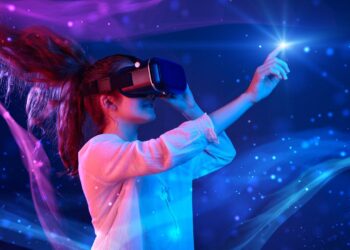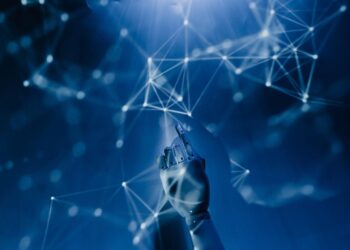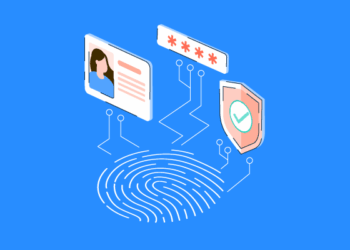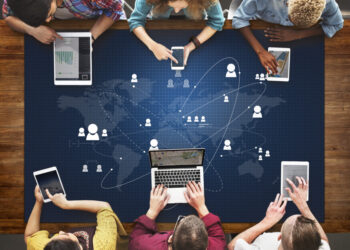For centuries, creativity was a discipline confined to a physical medium. An artist’s genius was expressed on canvas, a writer’s vision in a book, and a musician’s passion in a live performance. The digital revolution of the last century, with its new tools for design and communication, began to challenge this traditional model. Today, we are on the cusp of a profound and irreversible transformation. A new era of creativity is emerging, one that is not only digital but also decentralized, immersive, and collaborative. This is the era of digital art’s next wave, a digital renaissance that is democratizing art, redefining ownership, and fundamentally changing what it means to be a creator.
This isn’t about replacing human genius with a machine. It’s about a new kind of partnership, one where artificial intelligence becomes a co-pilot, where virtual reality is the new canvas, and where blockchain technology provides a new foundation for ownership and authenticity. This comprehensive guide is a deep dive into this transformative era, exploring the core pillars that define this new creative landscape, the groundbreaking technologies that are making it a reality, and the critical challenges we must navigate to ensure this future is one that is equitable, humane, and sustainable.
The Foundation of a Renaissance

The rise of online creativity is not just a technological change; it is a profound philosophical and societal one. The move from a physical canvas to a digital one has fundamentally changed the way we create, share, and value art.
- From Pixels to Possibilities: A Brief History: The early days of digital art were a simple digital translation of traditional art forms. An artist would use a computer program to create a piece of art that mimicked a painting or a drawing. The next wave of digital art was defined by the rise of a new generation of digital artists who embraced the unique properties of the medium, creating new forms of art that were a direct reflection of the digital world. The next wave is a profound, irreversible transformation.
- The Democratization of Art: In the past, the tools of creativity, from a printing press to a professional recording studio, were expensive and inaccessible to most people. Today, with the proliferation of digital tools and online platforms, the ability to create art is more democratic than ever before. Anyone with a smartphone and a laptop can create a professional-looking video, a beautiful piece of digital art, or a unique piece of music.
- The Three Catalysts of the Next Wave: The next wave of digital art is being driven by three powerful forces: generative AI, which is a new kind of creative partner; the metaverse, which is a new kind of canvas; and Web3, which is a new kind of economy that provides a new foundation for ownership and authenticity.
The Defining Pillars of Digital Art’s Future
The future of creativity is not a monolith; it is a tapestry of new and innovative approaches that are being woven together to create a more dynamic and flexible digital landscape.
A. Generative AI as a Creative Partner
This is the most revolutionary pillar of the new creative landscape. Generative AI is a new kind of artificial intelligence that can create new content, from images and music to text and video, from a simple text prompt.
- The Ultimate Co-Pilot: The AI is not a replacement for the artist; it is a creative partner, a co-pilot that can help an artist to explore a thousand different ideas in minutes. An artist could use an AI to generate a hundred different versions of a concept, freeing them up to focus on the refining and curating process.
- A New Artistic Medium: The AI is not just a tool; it is a new artistic medium, a new way for artists to express their genius. Artists are now using AI to create stunning works of art that are a blend of their own vision and the creative power of a machine.
- A New Era of Collaboration: The AI is a new kind of collaborator, a partner that can be used to create art that is a blend of a human’s vision and a machine’s power. This is a new and profound way of thinking about creativity, a new kind of partnership between a human and a machine.
B. Immersive and Experiential Art
The future of art is not a 2D experience on a screen; it is a 3D, immersive, and experiential one.
- Virtual Reality Art and Sculpting: With virtual reality (VR), the artist is no longer limited to a physical canvas. They can now create a 3D sculpture in a shared virtual space, a piece of art that can be experienced and interacted with by others.
- Augmented Reality for Public and Interactive Art: Augmented reality (AR) is a powerful new tool for public and interactive art. An artist can use AR to create a piece of art that is overlaid on a physical object, a piece of art that can be experienced and interacted with by others. This is a new and powerful way to bring art into the public space.
- The Metaverse as a Creative Hub: The metaverse is a new social and creative frontier, a shared virtual space where artists can meet, collaborate, and create in a shared virtual space. It is a place where a new generation of digital artists, designers, and entrepreneurs is emerging.
C. The Power of Ownership and Authenticity (Web3)
The early days of digital art were plagued by a lack of ownership and a lack of authenticity. A digital image could be copied and distributed endlessly, with no way to prove a piece of art’s provenance or value. The future is different.
- The Foundation of Digital Asset Ownership: The blockchain provides a new foundation for ownership and authenticity. It is a decentralized ledger that provides a secure and transparent way to manage a digital economy.
- NFTs as a New Form of Patronage: NFTs (non-fungible tokens) are a new form of digital deed, a digital deed that proves ownership of a digital asset. This technology has provided a new way for artists to sell their work, to connect with their audience, and to earn a living from their creative genius. It is a new and powerful form of patronage, a new way for an audience to support the artists they love.
- A New Paradigm for Artists: The Web3 era is a new paradigm for artists. It is a world where an artist can sell a piece of digital art, a piece of music, or a video and be a part of a decentralized, open, and transparent economy. It is a world where a new generation of digital artists is emerging.
D. Collaborative and Community-Driven Creativity
The future of creativity is not a solitary pursuit. It is a collaborative, community-driven one.
- Online Communities for Artists: A new generation of online communities is being created that is designed to help artists to connect with one another, to collaborate on projects, and to learn from one another. These communities, which are often built on the principles of trust and mutual support, are a powerful way to foster a sense of community and to create a more vibrant creative landscape.
- Collaborative Tools: A new generation of collaborative tools is being created that allows artists to work together on a single project, no matter where they are in the world. These tools, which include virtual whiteboards, project management software, and virtual reality meeting spaces, are a powerful way to foster a sense of teamwork and collaboration.
The Technological Toolkit for the Digital Renaissance
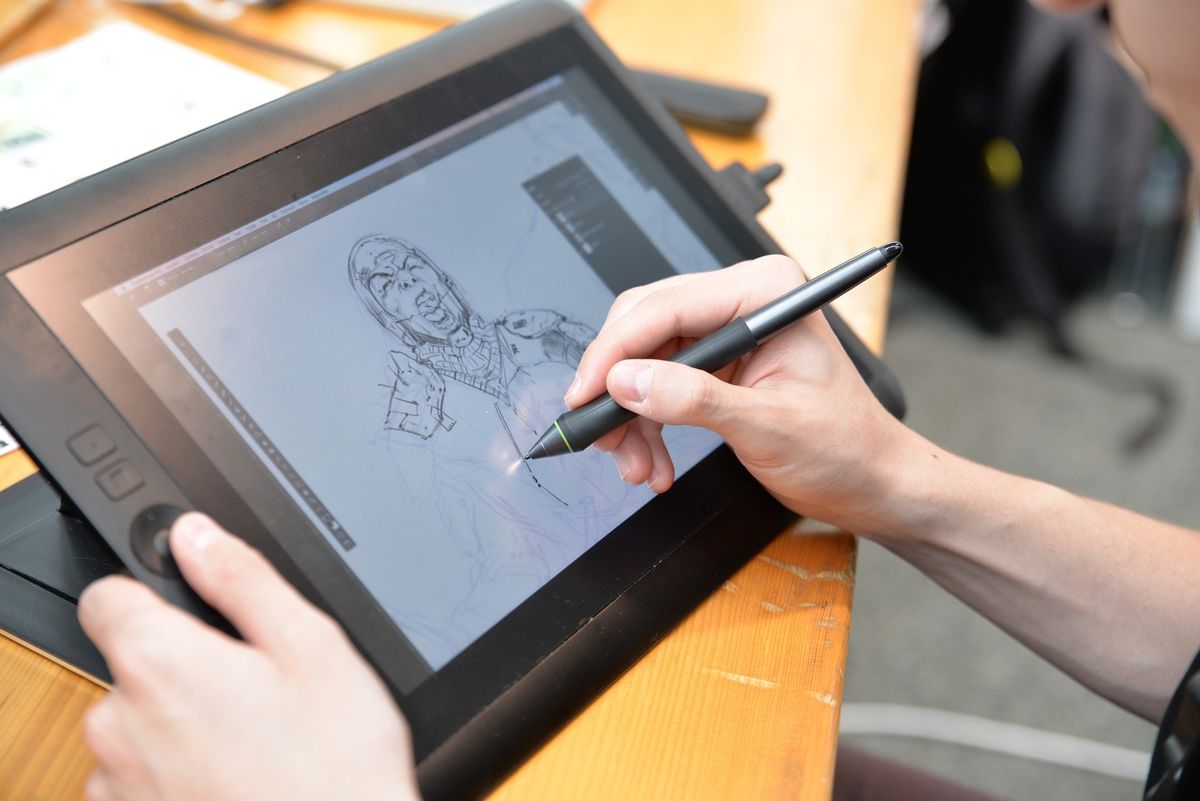
The visionary principles of the new creative frontiers are made possible by a suite of cutting-edge tools and technologies that are fundamentally changing the way we create, share, and value art.
- Generative AI Platforms: This is the engine of the digital renaissance.
- AI Image and Video Generation: A new generation of AI image generators is being created that allows artists to create stunning images and art from a simple text prompt.
- AI for Music and Soundscapes: AI music composers are being used to create new music and soundscapes, providing artists with a new source of inspiration.
- AI as a Writer’s Co-pilot: AI-powered writing assistants are being used to help writers to write articles, emails, and social media posts, making them more productive and more efficient.
- AR and VR: The future of art is a 3D, immersive experience.
- Virtual Reality Art and Sculpting: VR is a powerful new tool for artists, providing them with a new canvas and a new way of creating a 3D sculpture in a shared virtual space.
- Augmented Reality for Public and Interactive Art: AR is a new and powerful way to bring art into the public space, creating a piece of art that is overlaid on a physical object, a piece of art that can be experienced and interacted with by others.
- Blockchain and NFTs: The future of art is a decentralized one.
- The Foundation of Digital Asset Ownership: The blockchain is the foundation of digital asset ownership, a decentralized ledger that provides a secure and transparent way to manage a digital economy.
- NFTs as a New Form of Patronage: NFTs are a new form of digital deed that proves ownership of a digital asset. This technology has provided a new way for artists to sell their work, to connect with their audience, and to earn a living from their creative genius.
- Social and Community Platforms: The future of creativity is social.
- The Metaverse as a Creative Hub: The metaverse is a new social and creative frontier, a shared virtual space where artists can meet, collaborate, and create in a shared virtual space.
- New Tools for Collaboration: A new generation of collaborative tools is being created that allows artists to work together on a single project, no matter where they are in the world.
The Revolution in Action
The concepts of the new creative frontiers are already beginning to transform a wide range of industries.
- The Fine Art Market: The art world is in the midst of a profound transformation. The rise of generative AI and NFTs has challenged the traditional notions of art, authorship, and ownership. The future of art is a blend of the physical and the digital, a world where an artist’s genius is expressed in a variety of new and innovative ways.
- Design and Branding: The design and branding world is being transformed by AI. A new generation of AI-powered design tools is being created that can help a designer to create a hundred different logos in minutes, freeing them up to focus on the strategic and creative parts of their jobs.
- Film and Storytelling: The film and storytelling world is being transformed by AI. AI-powered tools are being used to create new special effects, to write new scripts, and to create new forms of immersive storytelling. The future of film is a blend of the physical and the digital, a world where a new generation of filmmakers is using technology to create new and innovative forms of storytelling.
- Education and Learning: The classroom of the future is a global, immersive one. The metaverse is a powerful tool for education, providing a new way for students to learn about history, science, and art in a shared virtual space. It is a world where a student can walk through a virtual museum, visit a virtual lab, or collaborate with students from all over the world.
The Challenges and Ethical Imperatives
While the new creative frontiers are exciting, they are not without their challenges. Navigating these hurdles is key to building a future that is equitable, humane, and sustainable.
- The “Black Box” Problem and Transparency: Many AI models are “black boxes”—their decision-making processes are opaque and difficult to understand. This lack of transparency makes it challenging to pinpoint why an AI generated a particular output or if it carries inherent biases. The challenge is to create AI that is more transparent and more explainable, a technology that we can trust and understand.
- The Future of Copyright and Intellectual Property: The rise of generative AI has raised significant questions about the future of copyright and intellectual property. Who owns the copyright for an image created by an AI? The user who wrote the prompt? The company that created the AI? The artists whose work was used to train the model? These questions are currently unanswered and pose a significant risk for the creative world.
- The Digital Divide: As technology becomes more central to education, the gap between those who have access to it and those who do not will widen. The challenge is to ensure that the benefits of the digital learning revolution are available to everyone, regardless of their income, their location, or their ability.
- The Responsibility of the Artist: The role of the artist is changing. In a world of AI-powered tools and an endless stream of content, the artist is no longer just a creator; they are a curator, a storyteller, and an ethical compass. The artist’s role is to ensure that their work is authentic, responsible, and a force for good.
Conclusion
The discipline of creativity is at a pivotal moment. The old models of creation, based on a separation between the artist and the tool, the physical and the digital, are no longer viable. The digital art’s next wave is the blueprint for this new era. It is a powerful fusion of technology and humanity, a commitment to a new way of creating that is both more efficient and more meaningful.
This guide has only begun to explore the vast and exciting possibilities. We have seen how a blend of generative AI, immersive art, and advanced technologies like the blockchain and the metaverse is creating a new language of creativity. This transformation is not without its challenges; it requires a new skill set and a new way of thinking. But the opportunity is even greater. The ultimate reward for this shift in our creative philosophy is not just a new level of convenience or a new form of entertainment. It is the creation of a world that is more connected, more equitable, and more in tune with the rhythms of our daily lives. It is the creation of spaces that improve our health, enrich our lives, and foster a deeper connection to our communities and our planet. The future of creativity is a future that is defined by a new kind of humanity, a humanity that is both technological and profoundly human.


